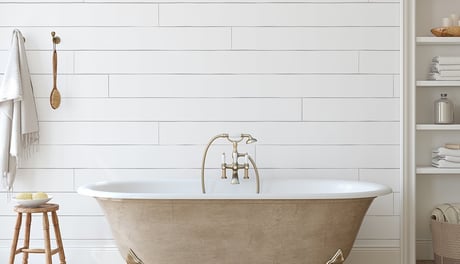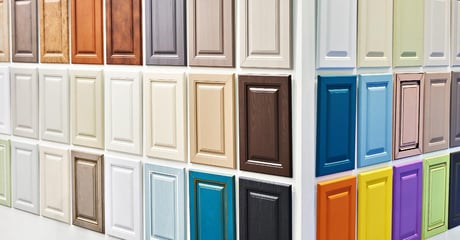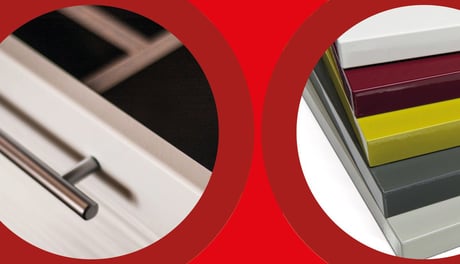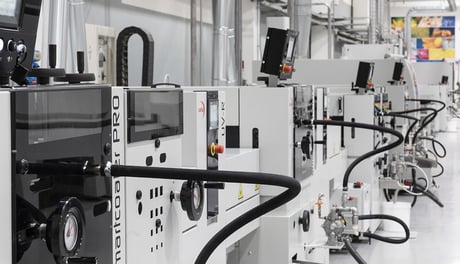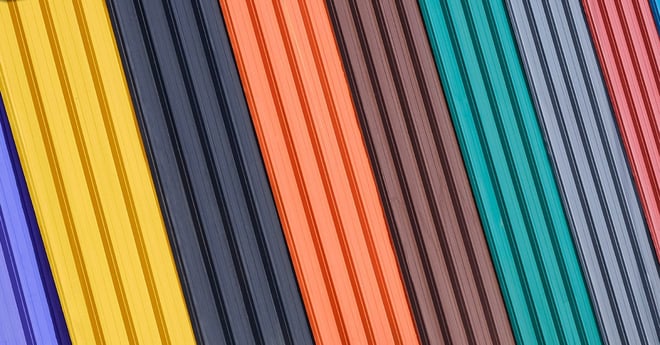
Why coat steel?
This article leaves aside the cleaning, degreasing and sandblasting operations that may or may not be necessary to ensure better adhesion and durability of the film as these tasks are highly dependent on the type and quality of the material used. Instead, we’ll be focusing on the coating application process - the process that has the biggest impact on the final appearance of the product and its characteristics - and highlighting Cefla Finishing's innovative solutions for coating steel and metals in general.
THE MOST INNOVATIVE FINISHING SOLUTIONS
Discover how highly advanced finishing solutions can elevate your competitiveness.
Industrial steel coating: types
Protective coatings used on steel can be divided by their surface film drying method or by function. The durability of on-steel coating depends on several factors. These include the design of the structure, preparation of the surface and, above all, the quality of the application and proper drying of the applied layer.
Steel coating can involve several different techniques. Liquid coating and powder coating are significantly different.
Powder Coating
In powder coating, the powder is applied to the substrate by way of an electrostatic charge. This technique subsequently involves a melting process in an oven: this allows the powder to fuse into a homogeneous layer and harden once cooled. Powder coating typically consists of a single layer.
Liquid coating
In liquid coating, polymerization can take place physically, simply through evaporation of the solvent or water (single-component coatings), or chemically, with the aid of a catalyst mixed with the coating resin to make it stronger (bi-component coatings). In both cases, coating curing temperatures are typically lower than those used in powder-based processes and less time is needed, resulting in energy savings for the company.
Liquid metal coatings generally consist of two layers: one that acts as a primer/corrosion inhibitor and the finishing layer that will be visible on the product. Compared to powder coating, liquid coating is generally easier to restore if damaged or if there are signs of corrosion.
Duplex systems
There are other methods. For example, ‘duplex systems’ involve hot-dip galvanizing followed by application of a coating film; this is a precise sequential procedure and is therefore less flexible from a production perspective.
Cefla Finishing steel coating solutions
Cefla has a broad portfolio of coating solutions that include both flatbed lines - with automatic spray, roller or curtain coating systems - and vertical lines (floor-mounted or overhead lines) with automatic spray coating systems.
Spray coating lets you apply coating to all the areas of complex, typically three-dimensional parts. Roller coating and curtain coating are optimal for essentially flat surfaces and optimise consumption of the coating itself.
How is industrial coating of steel performed?
Applying the coating
As illustrated in the preceding paragraph, different technologies can be used. With spraying, one or more spray guns apply the coating mist on the surface to be treated. Increasingly, companies need to guarantee uniformity of application, boost their plant productivity and reduce coating consumption. The systems produced by Cefla Finishing identify the position and shape of the parts to be coated and can therefore apply a more uniform coating layer in less time, increasing production while optimising coating consumption.
Application systems may consist of a single axis that moves the guns back and forth as the parts to be coated are fed continuously under the spray guns; alternatively, they may involve multiple interpolated axes perpendicular to each other (Cartesian or gantry robots) that allow the guns to follow the shape of the piece and, for example, perform continuous edge coating. Where parts have markedly curved surfaces or are particularly thick, Cefla systems can incorporate articulated robots capable of recognising and coating even complex shapes without programming.
Drying and curing
For steel coating purposes, single-component and bi-component products are generally used.
In the former, the applied coating layer is cured via evaporation of the solvent and the binding together of the coating molecules, making it a physical drying process.
For the latter (i.e. bi-component products), curing is a chemical-physical process requiring a catalyst which combines and chemically bonds the coating molecules once the solvent has evaporated.
To speed up curing and reduce drying times - which can vary from a few minutes to several hours - hot air and, in some cases, infrared lamps are used with both single-component and bi-component products. Energy input during drying eliminates the solvent in less time and provides the coating with the energy needed to activate the catalyst.
Some products can be cross-linked by using ultraviolet rays to activate chemical curing. Where these products have 100% solid residue, there is no solvent evaporation phase and drying can be completed extremely quickly, in a matter of seconds.
Cefla Finishing and industrial steel coating: the CROMATICA case study
Did you know that coating isn’t the only steel finishing solution? Recent years have seen innovative technologies reshape the industry and create new market opportunities. Metal finishing technologies include, in fact,alternatives such as industrial digital printing or vacuum coating, alongside tried and tested techniques like spray coating, roller coating or powder coating.

A good example of how new industrial steel coating techniques are already being used successfully is CROMATICA, part of the COATEEL range by the Marcegaglia Group’s pre-painted steel products division; this system aims to extend the use of steel products to new sectors, such as architecture and design. CROMATICA lets manufacturers print customised patterns and images on surfaces made of steel and other materials, with a near-infinite range of colours, hues, degrees of opacity and processes. This one-of-a-kind application was developed through investment in research, innovation, experimentation and the partnership with Cefla Finishing.
More specifically, the plant designed by Cefla Finishing has allowed CROMATICA to become fully operational, rendering its output fully customisable in terms of both ‘look’ (colours, textures, images and patterns) and ‘feel’: the result of a range of extremely hard-wearing finishes that create multiple tactile effects. This means the final product can meet a vast range of creative and technical needs in various fields of application: from residential and commercial buildings to infrastructure, transport and automotive. Read the Case Study and learn more about CROMATICA
The application developed by the Marcegaglia Group is just one of a limitless number of possibilities that stem from the use of innovative steel coating techniques. Contact us and a Cefla expert will illustrate all our latest-generation products and services.


